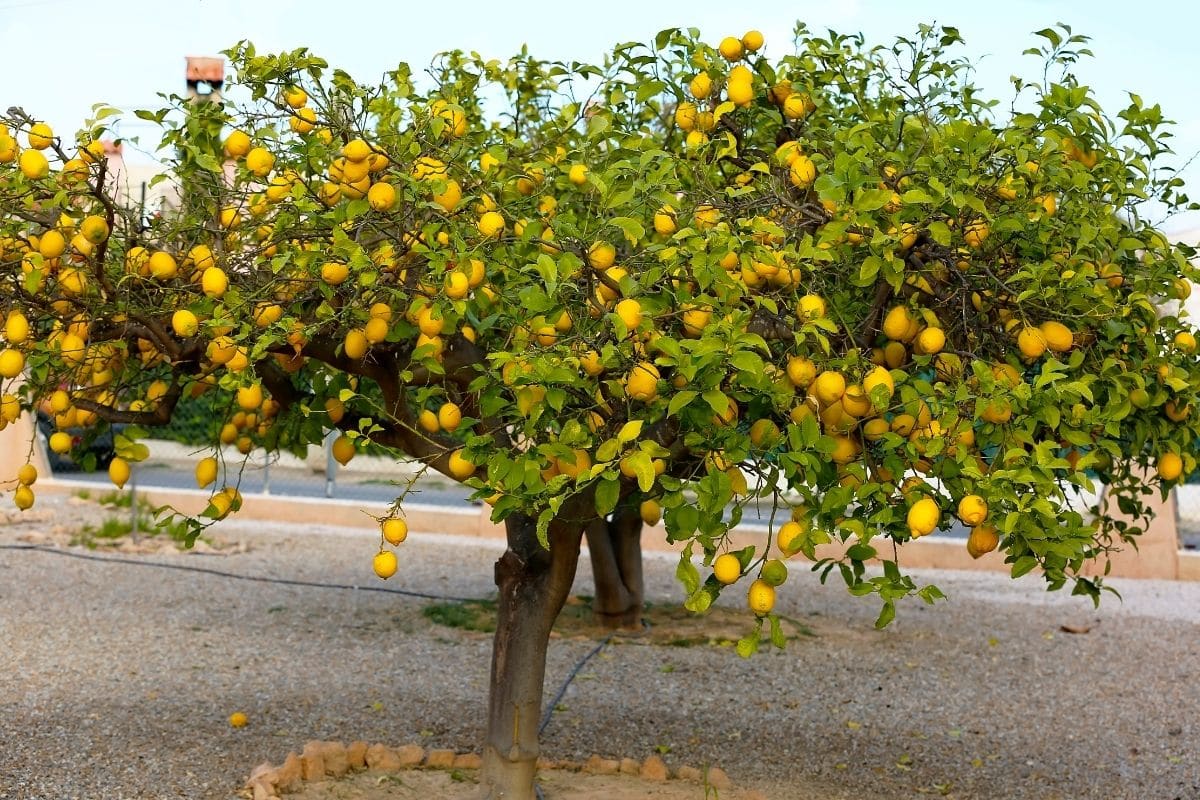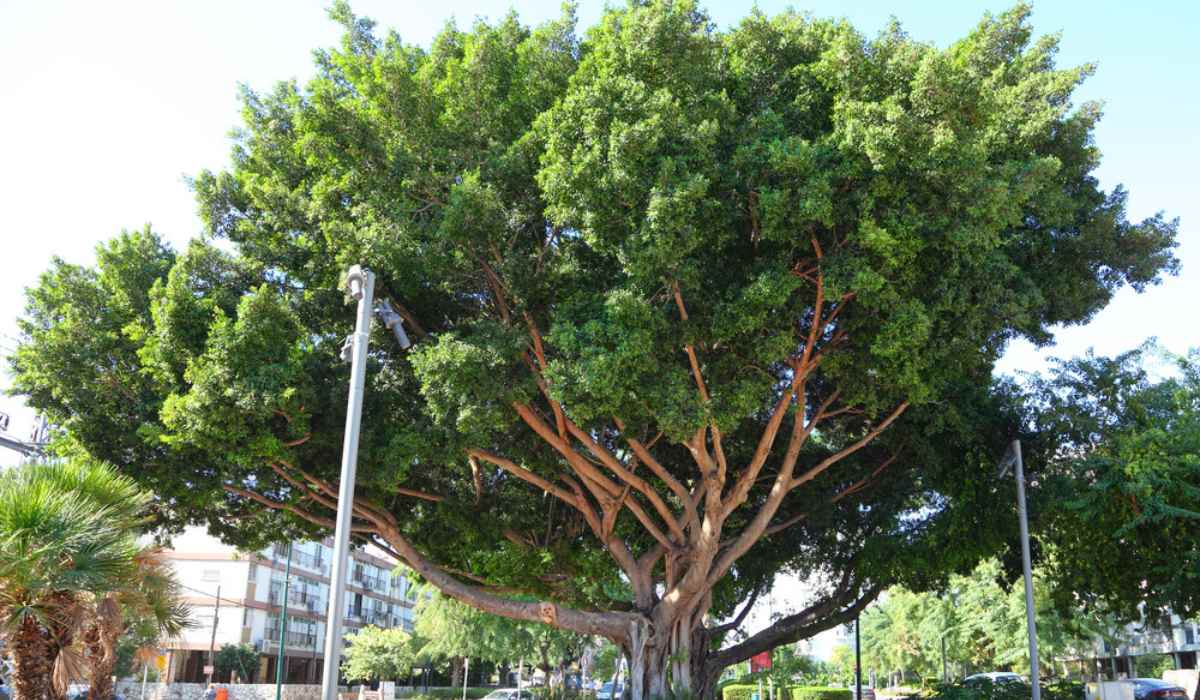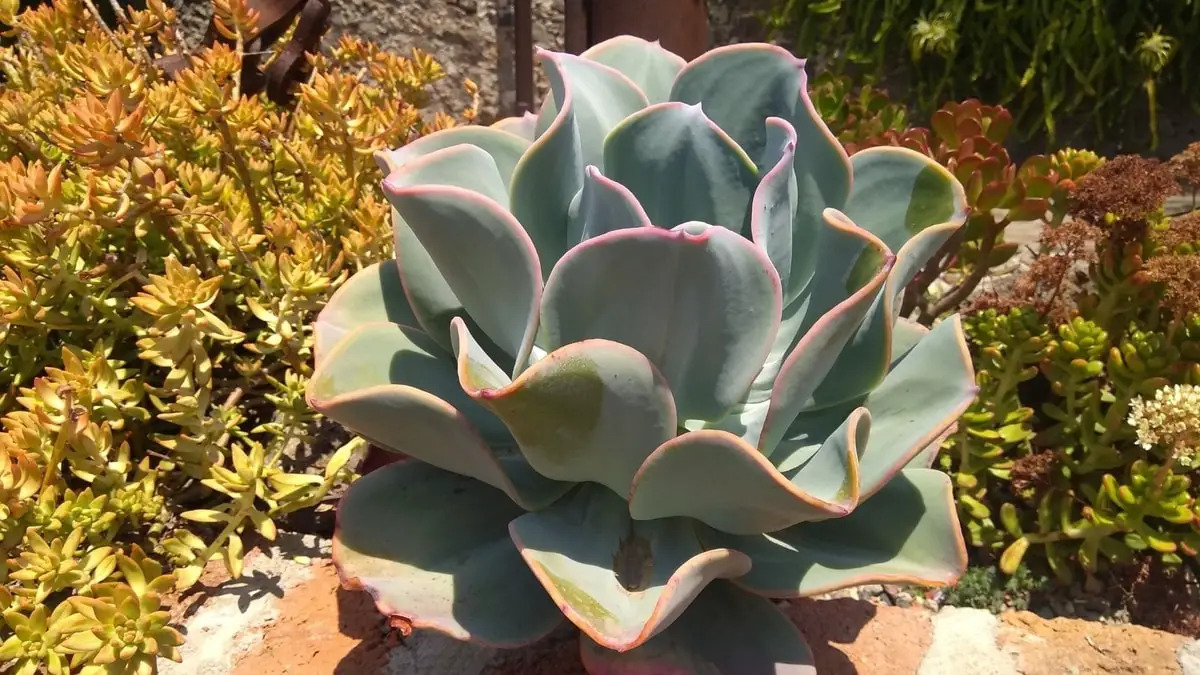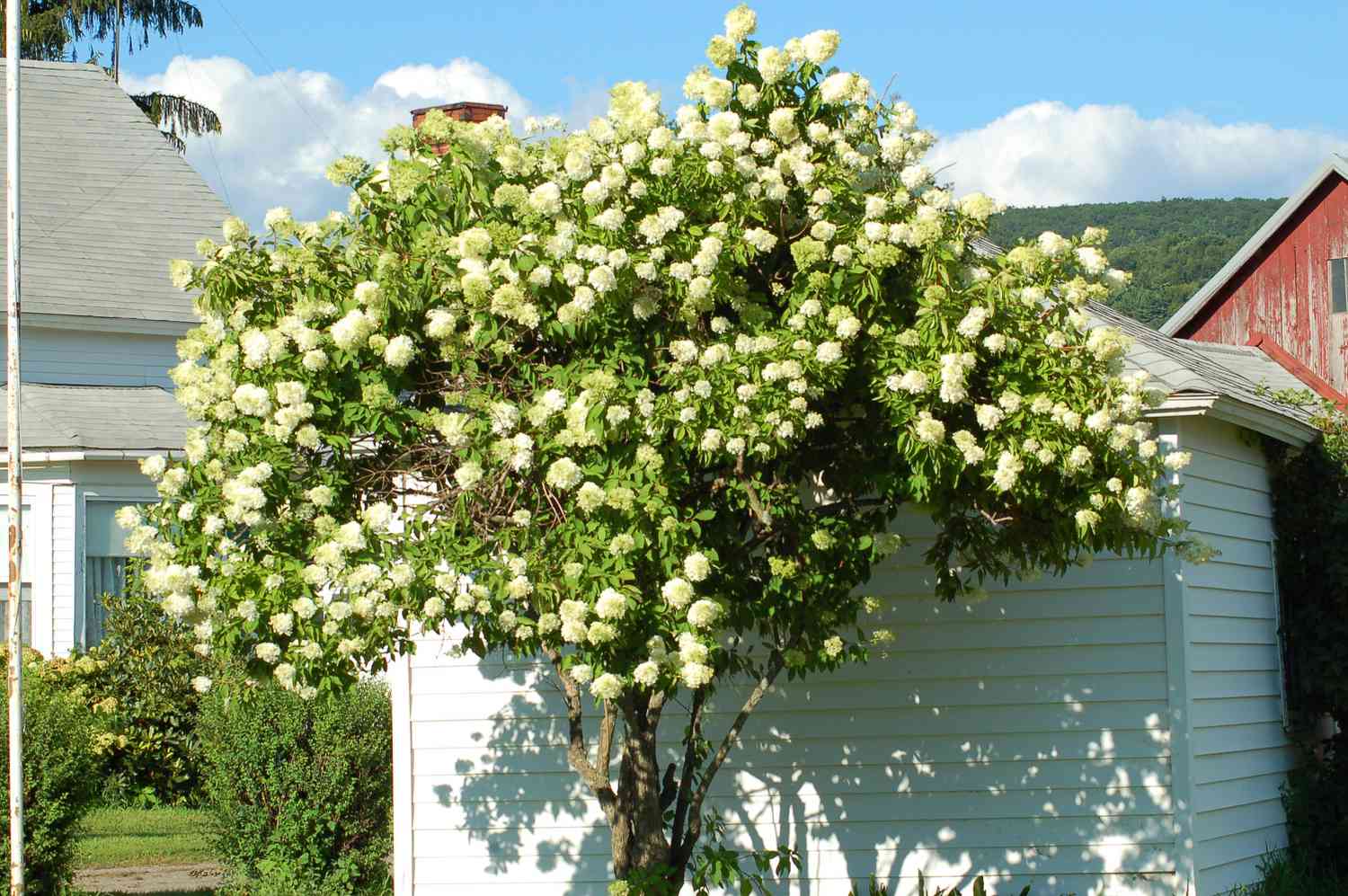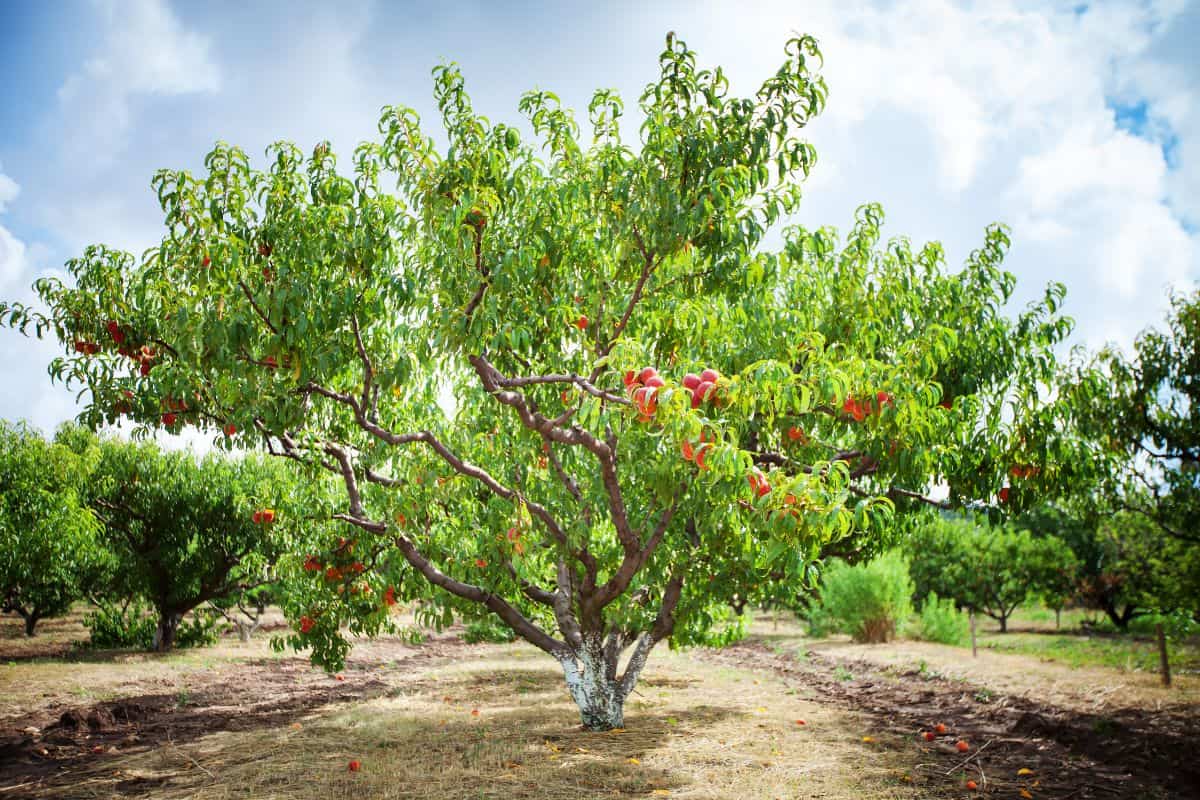Home>Garden Design>How Big Is The Average Backyard
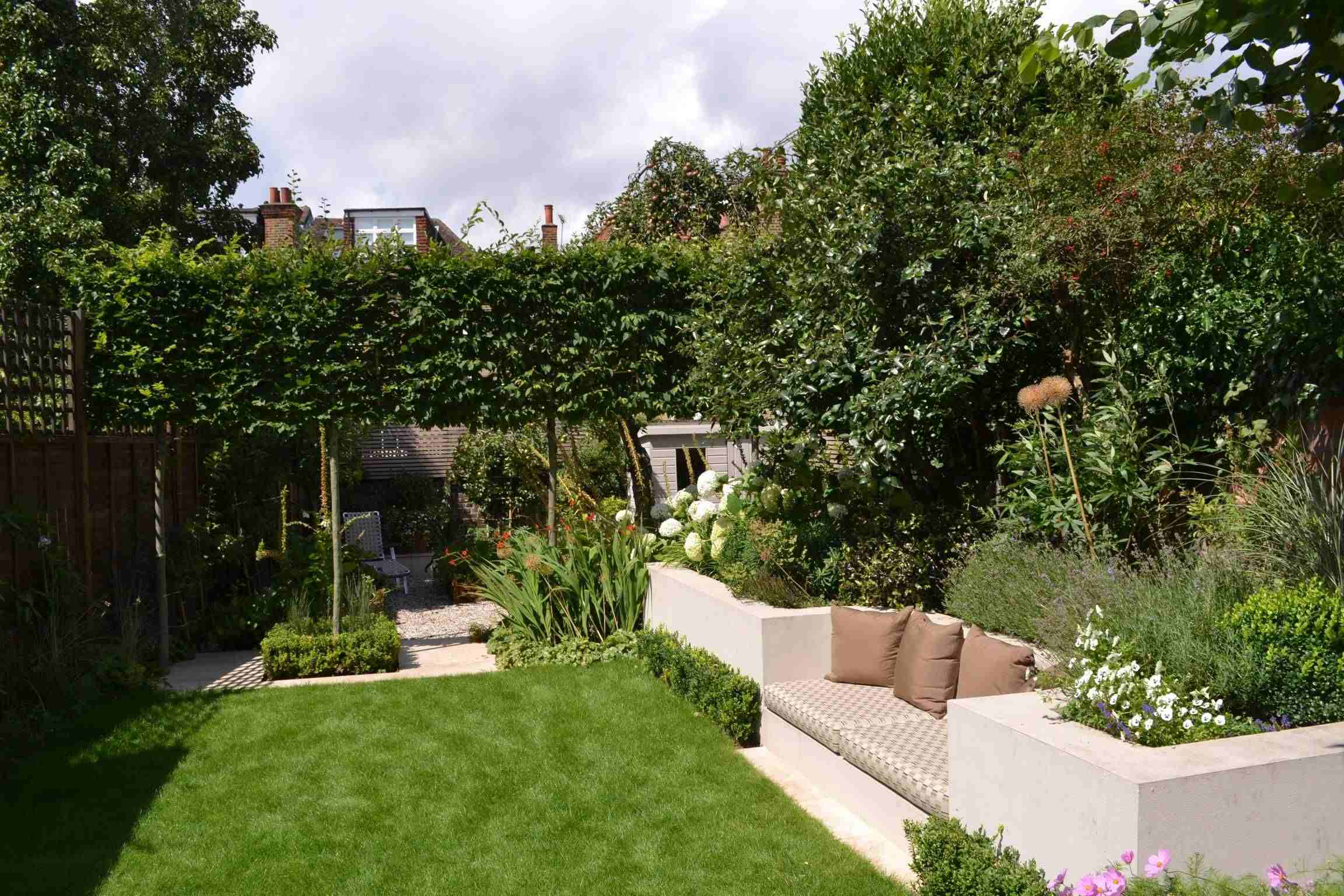

Garden Design
How Big Is The Average Backyard
Modified: January 22, 2024
Discover the ideal size of the average backyard and learn how to plan your garden effectively for maximum functionality and enjoyment.
(Many of the links in this article redirect to a specific reviewed product. Your purchase of these products through affiliate links helps to generate commission for Chicagolandgardening.com, at no extra cost. Learn more)
Table of Contents
Introduction
Welcome to the world of gardening! Planning your garden is an exciting endeavor that allows you to create a beautiful outdoor space where you can relax, connect with nature, and unleash your creativity. Whether you’re a seasoned gardener or a beginner with a green thumb, having a well-planned garden can make all the difference in transforming your backyard into a stunning oasis.
When it comes to planning your garden, one of the key factors to consider is the size of your backyard. The size of your outdoor space plays a significant role in determining the type of garden you can create and the possibilities that lie ahead. From intimate courtyard gardens to sprawling landscapes, the size of your backyard sets the stage for your gardening journey.
While every backyard is unique, there is an average size that can provide a helpful benchmark for understanding the possibilities and challenges that come with different sizes of outdoor spaces. In this article, we will explore the factors that influence backyard size, delve into the average backyard sizes in different regions, discuss how backyard size affects property value, and offer valuable tips for maximizing space in small backyards. We will also discuss the benefits of having a large backyard and highlight current trends in backyard sizes.
So grab a cup of coffee, put on your gardening gloves, and let’s dive into the world of backyard planning!
Factors Influencing Backyard Size
There are several factors that can influence the size of a backyard. Understanding these factors can help you understand why some yards are larger or smaller than others:
- Location: The location of a property plays a vital role in determining the size of the backyard. Properties in urban areas often have smaller backyards due to limited space, while properties in suburban or rural areas may have more extensive outdoor spaces.
- Lot size: The size of the lot on which a house is built directly impacts the size of the backyard. Larger lots typically have larger backyards, providing homeowners with more space to work with.
- Local regulations: Local building codes and regulations can also influence the size of a backyard. Some areas have strict zoning laws that dictate the minimum size of a backyard or the ratio of building coverage to outdoor space.
- Homeowner preferences: Personal preferences of homeowners can also play a role in backyard size. Some homeowners prioritize outdoor space and choose properties with larger yards, while others may prefer a smaller yard for easier maintenance.
- Property layout and design: The shape and layout of a property can impact the size of the backyard. Irregularly shaped or narrow lots may result in smaller backyard areas, while square or rectangular lots generally provide more space.
It’s important to keep in mind that while backyard size is influenced by these factors, it doesn’t necessarily determine the potential of your outdoor space. Regardless of the size of your backyard, there are ways to make the most of your garden and create a stunning and functional outdoor environment.
Average Backyard Sizes in Different Regions
Backyard sizes can vary significantly depending on the region and location of a property. Factors such as population density, the availability of land, and cultural preferences can influence the average size of backyards. Here’s a glimpse of the average backyard sizes in different regions:
- Urban areas: In densely populated urban areas, where space is limited, the average backyard size tends to be smaller. Urban properties often have compact outdoor spaces, such as courtyard gardens or balconies, which prioritize functionality and efficient use of space.
- Suburban areas: In suburban areas, where homes are typically located on larger lots, the average backyard size is usually more generous. Many suburban neighborhoods offer spacious yards that allow homeowners to create diverse outdoor areas, including gardens, lawns, and recreational spaces.
- Rural areas: In rural areas, where land is more abundant, properties often have larger backyard sizes. Homeowners in rural settings often enjoy extensive outdoor spaces that provide ample room for gardens, livestock, and recreational activities.
- Cultural factors: Cultural factors can also influence the average size of backyards. For example, in some European countries where apartments and compact living spaces are common, the average backyard size may be smaller compared to countries with a tradition of single-family homes and expansive gardens.
It’s important to keep in mind that these are generalizations and can vary even within regions. Specific neighborhoods, property types, and individual preferences can also impact backyard sizes. When planning your garden, it’s essential to consider the average backyard size in your specific area as it can provide insights into what is feasible and common in your local context.
How Backyard Size Affects Property Value
One of the significant factors that can influence the value of a property is the size of the backyard. A well-maintained and functional outdoor space can add significant value to a home. Here’s how backyard size affects property value:
1. Curb Appeal: A spacious and well-designed backyard enhances the curb appeal of a property. A visually appealing outdoor space can make a strong first impression on potential buyers and increase the overall desirability of the property.
2. Additional Living Space: A larger backyard provides additional living space, extending the usable area of the property. This extra space can be utilized for various purposes, such as outdoor dining, entertaining guests, or creating recreational areas. The versatility and functionality of a sizable backyard can attract buyers and increase the perceived value of the property.
3. Privacy and Relaxation: A larger backyard offers more privacy and tranquility. It creates a sanctuary where homeowners can retreat from the hustle and bustle of daily life. The ability to enjoy peace and relaxation in a spacious outdoor area is highly desirable, which can positively impact the property’s value.
4. Landscaping Opportunities: A larger backyard provides more opportunities for landscaping and gardening. Homeowners can create beautiful gardens, install features like ponds or waterfalls, or even build outdoor structures like decks or patios. These landscaping features can significantly enhance the aesthetic appeal of the property and increase its value.
5. Future Expansion Potential: A larger backyard offers potential for future expansion or customization. Whether it’s adding an extension to the existing property or building additional structures, a sizable yard provides flexibility for homeowners to adapt the property to their evolving needs. This flexibility can be attractive to potential buyers and can positively impact property value.
It’s important to note that the impact of backyard size on property value may vary depending on the local real estate market conditions, buyer preferences, and other factors. However, in general, a bigger and well-designed backyard can significantly enhance the value and marketability of a property.
The Challenges of Small Backyards
While small backyards offer a cozy and manageable outdoor space, they can also present some unique challenges. It’s important to be aware of these challenges and strategize how to overcome them to maximize the potential of your small backyard. Here are some common challenges faced by homeowners with small backyards:
- Limited Space: The most obvious challenge of a small backyard is the limited space available for landscaping, gardening, and outdoor activities. It can be challenging to fit all desired elements, such as seating areas, plants, and recreational spaces, into a compact area.
- Lack of Privacy: Small backyards are often closer to neighboring properties, which can compromise privacy. Finding ways to create a sense of seclusion and intimacy in a confined space can be a challenge.
- Storage Constraints: Limited space may make it difficult to find adequate storage solutions for gardening tools, equipment, and outdoor furniture. Creativity and smart storage solutions are crucial in optimizing the available space.
- Maintenance: Small backyards can be easier to maintain compared to larger yards, but the challenge lies in finding a balance between a well-maintained space and avoiding it from feeling cluttered or overcrowded.
- Design Restrictions: The limited area of a small backyard can restrict the design possibilities. It may be difficult to incorporate diverse landscaping features or complex structures, as they can overpower and overcrowd the space.
Overcoming these challenges requires careful planning and creativity. Consider implementing space-saving techniques, such as vertical gardening, multi-functional furniture, and clever use of hardscaping elements. Prioritize the essential elements that align with your preferences and make the most out of the available space.
Remember, even with the limitations of a small backyard, you can still create a beautiful and functional outdoor space that brings joy and relaxation to your life. With thoughtful planning and innovative design, small backyards can be transformed into charming havens that make the most of their cozy nature.
Tips for Maximizing Space in a Small Backyard
Having a small backyard doesn’t mean you have to sacrifice style or functionality. With the right planning and design strategies, you can make the most of your compact outdoor space. Here are some helpful tips for maximizing space in a small backyard:
- Vertical Gardening: Utilize vertical space by growing plants on walls, trellises, or hanging baskets. This allows you to add greenery without taking up valuable floor space.
- Multi-functional Furniture: Invest in furniture that serves multiple purposes. For example, choose seating with built-in storage, or opt for a dining table that can be folded and stored when not in use.
- Intelligent Plant Selection: Choose plants that are compact or have a vertical growth pattern. This saves space while still providing a lush and vibrant garden atmosphere.
- Creative Seating Arrangements: Opt for flexible seating options, such as benches that can double as storage or modular furniture that can be easily rearranged to suit different needs.
- Strategic Lighting: Use clever lighting techniques to create the illusion of more space. Well-placed lighting can highlight key features and visually expand the area.
- Defined Zones: Divide your backyard into distinct zones for different purposes, such as a dining area, a lounging area, and a play area. Clearly defining these zones helps maximize the functionality of the space.
- Hidden Storage: Look for opportunities to tuck storage solutions out of sight. Utilize space under benches, build storage into the vertical elements of your backyard, or use freestanding storage units that can be easily concealed.
- Mirror Illusion: Strategically place mirrors to create the illusion of more space. Mirrors reflect light and visually expand the area, giving the impression of a larger backyard.
- Scale and Proportion: Choose plants, accessories, and furniture that are in proportion to the size of your backyard. Avoid oversized elements that can make the space feel cramped.
- Utilize Every Nook and Cranny: Make use of every available space, including corners, walls, and even the smallest nooks. Consider installing wall-mounted planters, shelving, or a vertical herb garden.
By implementing these tips, you can transform your small backyard into a functional and visually appealing outdoor space. With a little creativity and smart design choices, you can make the most of what you have and create a backyard oasis that feels spacious and inviting.
The Benefits of Large Backyards
Having a large backyard comes with numerous advantages, offering homeowners a wealth of opportunities to create their dream outdoor space. Here are some of the key benefits of having a spacious backyard:
- Endless Design Possibilities: With a larger area to work with, you have the freedom to incorporate a wide range of landscaping features, such as expansive gardens, water features, outdoor kitchens, and entertainment areas. The possibilities for creating a personalized and immersive outdoor environment are virtually limitless.
- Ample Space for Activities: A large backyard provides room for various activities and recreational pursuits. Whether you enjoy playing outdoor sports, hosting gatherings, or simply having space for children and pets to roam freely, a spacious yard offers the ideal setting.
- Enhanced Privacy: Larger backyards often offer increased privacy from neighbors and passersby. You can create a sense of seclusion by strategically incorporating trees, shrubs, and fencing, allowing you to relax and enjoy your outdoor space in peace.
- Entertaining and Hosting Opportunities: Hosting parties and gatherings becomes a breeze with a large backyard. You can set up outdoor seating areas, dining spaces, and even a dedicated entertainment zone, providing a perfect venue for enjoyable social events.
- Room for Customization: A generous backyard size allows for future expansion and customization. Whether you want to add a swimming pool, a greenhouse, or a guest cottage, having ample space enables you to adapt your outdoor environment as your needs and interests evolve.
- Sense of Serenity and Connection with Nature: A larger backyard provides a sense of serenity and a closer connection with nature. From creating a serene garden retreat to cultivating a thriving ecosystem with diverse flora and fauna, a spacious yard allows you to immerse yourself in the beauty and tranquility of the natural world.
By having a large backyard, you not only gain additional living space but also the opportunity to create a sanctuary that reflects your personality and lifestyle. The freedom to customize and design your outdoor space according to your preferences is a significant advantage of having a generous yard.
Remember that with more space comes additional maintenance responsibilities. However, the benefits of a large backyard far outweigh the efforts required, as it provides endless possibilities for enjoyment, relaxation, and self-expression.
Trends in Backyard Sizes
Over the years, there have been noticeable trends in backyard sizes, reflecting shifts in homeowner preferences and lifestyle choices. Here are some of the key trends observed in backyard sizes:
- Smaller Yards for Urban Living: With the increasing popularity of urban living, smaller backyards have become more prevalent. As cities become more densely populated, properties with compact outdoor spaces, such as small courtyards or rooftop gardens, have gained popularity.
- Outdoor Living Spaces: Homeowners are transforming their backyards into extensions of their indoor living spaces. Outdoor kitchens, dining areas, lounges, and entertainment zones are in high demand, emphasizing the desire to create a seamless transition between indoor and outdoor living.
- Multi-functional Areas: There is a growing emphasis on creating versatile and multi-functional backyard spaces. Homeowners seek to maximize the usability of their yards by incorporating features that serve multiple purposes, such as fire pits that can double as seating areas or green walls that provide both privacy and aesthetics.
- Sustainable Landscaping: There is a rising interest in eco-friendly and sustainable landscaping practices. Homeowners are opting for low-maintenance native plants, water-saving irrigation systems, and eco-conscious design elements, such as rainwater harvesting systems and permeable paving.
- Outdoor Entertainment: Backyards are becoming popular spaces for outdoor entertainment. Homeowners are investing in features like outdoor theaters, sound systems, and specialized lighting to create a captivating and immersive entertainment experience.
- Wellness and Relaxation: Backyards are increasingly seen as sanctuaries for relaxation and self-care. Homeowners are incorporating elements such as meditation gardens, spas, yoga areas, and therapeutic landscaping to enhance their personal well-being.
It’s important to note that trends can vary based on regional and cultural differences. However, these trends indicate an increasing desire to make the most of outdoor spaces, regardless of their size. Whether it’s creating a cozy urban retreat or a sprawling outdoor oasis, homeowners are prioritizing the design, functionality, and enjoyment of their backyards.
As landscaping, design, and technology continue to evolve, it will be fascinating to see how backyard trends develop in the future. However, the key focus remains on creating spaces that harmonize with nature, reflect individual preferences, and provide opportunities for relaxation, connection, and personal enjoyment.
Conclusion
Planning your garden is a thrilling and rewarding process that starts with considering the size of your backyard. Understanding the factors that influence backyard size, such as location, lot size, and local regulations, can help you navigate the possibilities and challenges that come with different outdoor spaces.
Whether you have a small backyard that requires creative solutions to maximize space or a large backyard that offers endless design possibilities, there are countless ways to create a stunning and functional outdoor environment.
Small backyards may come with limitations, but with thoughtful planning, vertical gardening, multi-functional furniture, and clever design choices, you can make the most of the space available. On the other hand, large backyards offer the luxury of an expansive canvas to realize your dreams of a personalized outdoor haven.
It’s important to remember that the size of your backyard doesn’t define its potential. Regardless of the size, your backyard can be transformed into a beautiful retreat that reflects your personality, lifestyle, and love for nature.
As trends in backyard sizes evolve, homeowners are increasingly seeking opportunities to create outdoor spaces that provide not only aesthetic appeal but also functionality, relaxation, and connection with nature. Whether it’s incorporating sustainable landscaping practices, integrating outdoor living areas, or catering to wellness and entertainment, the focus is on enjoying the benefits of outdoor living.
So, as you embark on your garden planning journey, embrace the potential of your backyard, explore the trends that inspire you, and allow your creativity to flourish. With thoughtful design, smart use of space, and a touch of personalization, you can create a garden oasis that brings joy and tranquility to your life for years to come.


